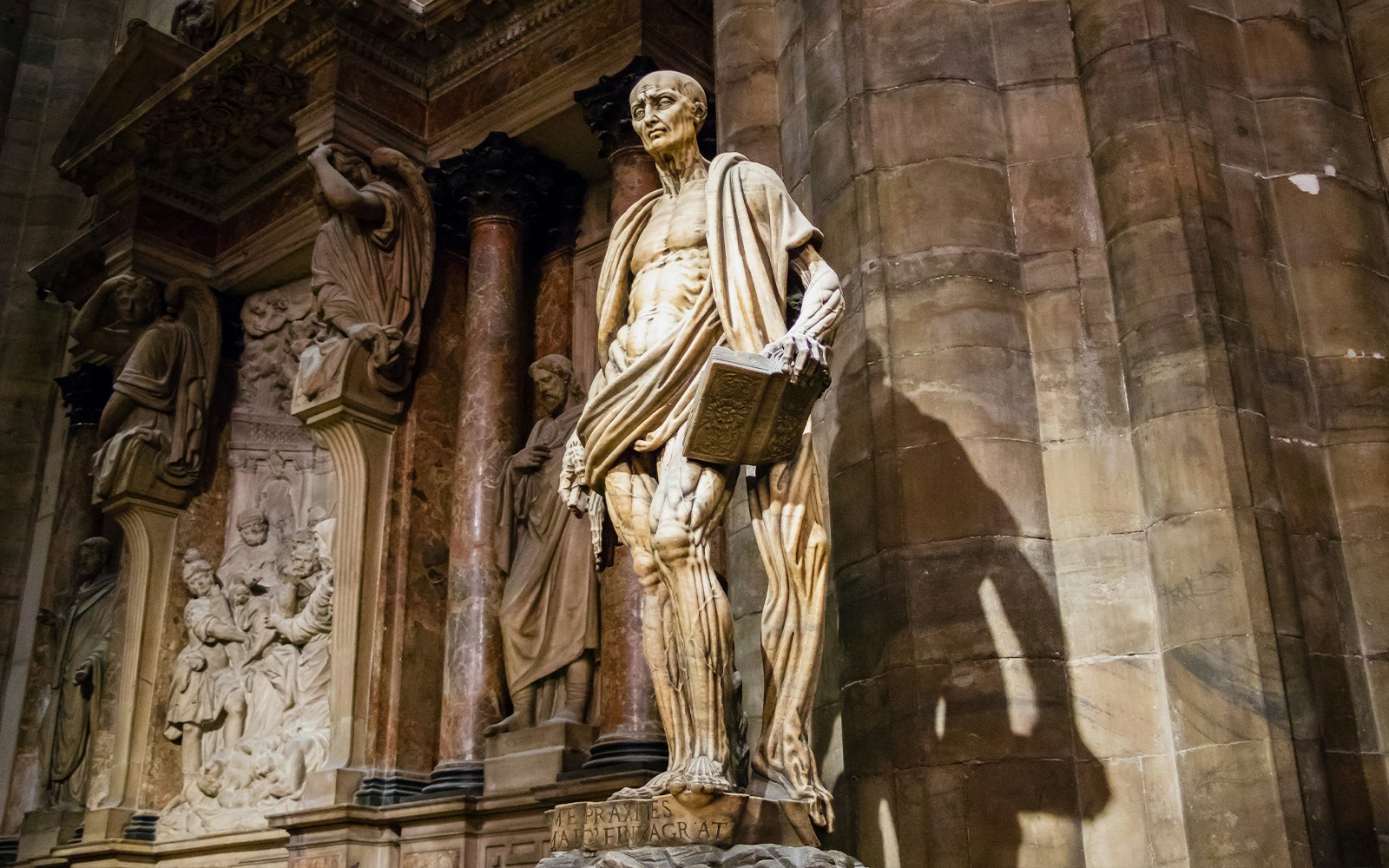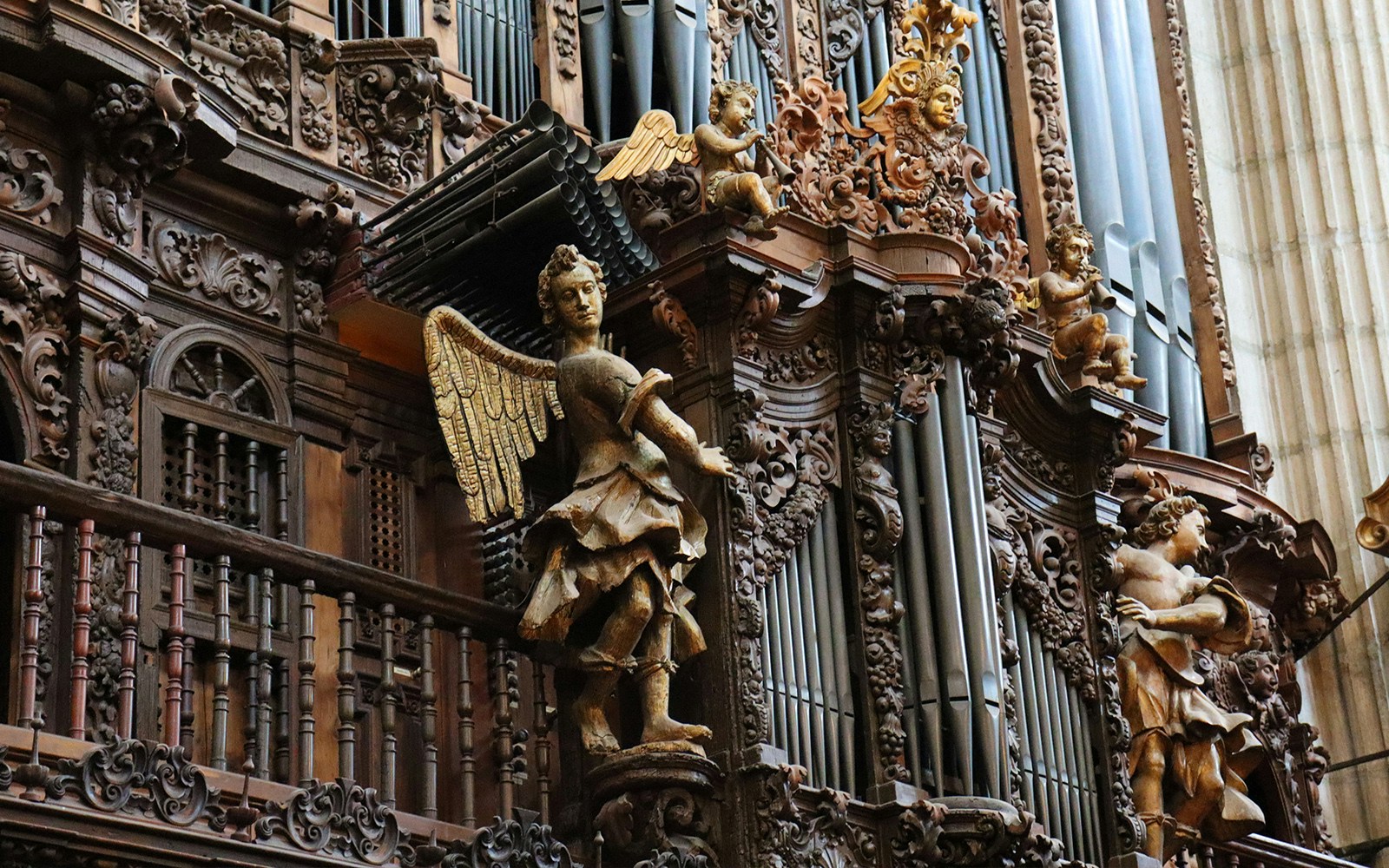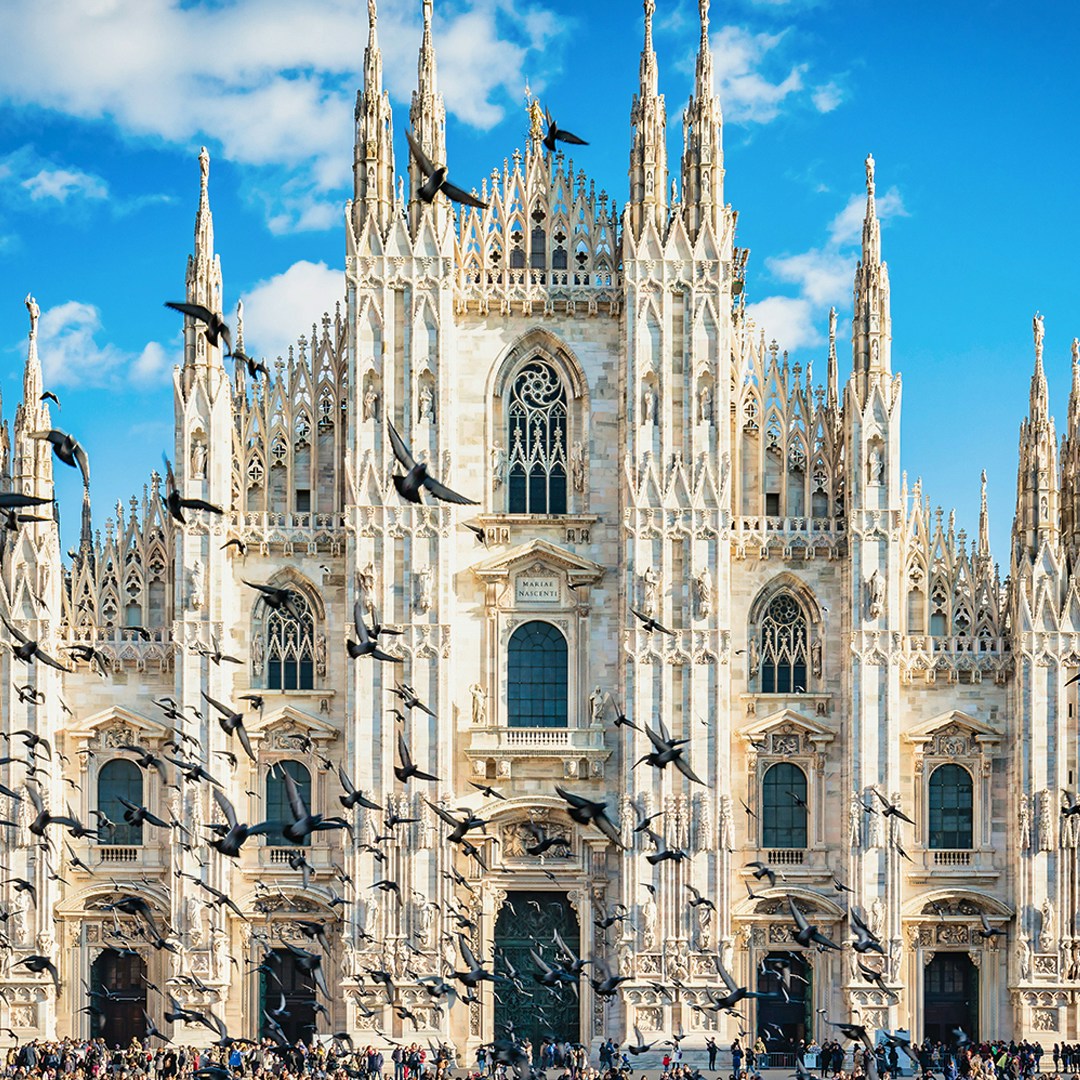
- Last Supper Milan
- Milan to Lake Como Tours
- Castello Sforzesco
- Leonardo3 Museum
- La Scala Theatre Tickets
- Villa Necchi Campiglio
- Malpensa Express Milan
- MuSt : Museum of Science and Technology
- Autostradale Milan
- Malpensa Airport transfers
- Bergamo Airport transfers
- Linate Airport transfers
- Hard Rock Café Milan
- QC Terme Milano
Explore the Inside of the Duomo Milan
Explore What's Inside the Duomo Milan








Top Things To See Inside Duomo Milan
Spend time at the Duomo Milan viewing its exquisite interiors, decorations, and adjoining rooms. Here we will look at aspects of the Duomo you cannot miss while you are inside:

Stone Columns and Vaults
The first thing that catches your attention when you step into the Duomo is the colonnade of hefty pillars that reach toward the ceiling. The cathedral has five broad naves, including the wings, that are divided by rows of 40 pillars measuring an astonishing 78 feet (24m) in height and 8 feet (2.5m) in diameter. The pillars are made of solid brick and covered generously with marble donated by Gian Galeazzo Visconti, the then-duke. The capitals of the pillars are richly decorated, each with eight statues on it, with two to three circles of smaller statues and embellishments. The pillars are fused at the top of the cathedral's ethereal groin vaults that are lined with ornate carvings.

The Patterned Floor
Admiring the symmetrical patterned floor of the cathedral is unavoidable since it covers the entire floor space. The floor is made completely from marble. It was constructed by Martino Bassi, using sketches of the architect Pellegrino Tibaldi who designed it in the second half of the 16th century. The contiguous gray-pink Candoglia marble slabs are inlaid together with Arzo red and black Vannera marble from Lake Como to form spectacular floral motifs. The floor has been subject to many restorations and renovations have given the delicate nature of Candoglia marble.

The Music Chapel
One of the oldest cultural institutions in all of Milan, the Music Chapel, is a choir that was begun in 1402. Seated in the circular presbytery, it consists of a music master, a deputy master, an organist, and a choir of children. Over the years, the Music Chapel has seen masters like Vincenzo Ruffo and Giulio Cesare. At one point the organist was Johann Christian, the son of J.S. Bach. Needless to say, this choir is very accomplished and can be heard every Sunday at 11:00 PM accompanying the celebration of the Eucharist.

The Presbytery and Altar
The central nave leads into a beautiful presbytery, a section of the church that is exclusive to the officiating clergy. The presbytery is divided into a raised semi-circle surrounded by 10 pillars with an ancient high altar standing in the middle. This high altar was originally from the Santa Maria Maggiore basilica, which was established in 313 AD and is a solid block of brocatelle marble. In the center of the altar is a plaque of a man holding a scroll, that is said to be part of a 3rd-century Roman Sarcophagus.

The Sundial
Entering from the facade doors in the southern aisle of the cathedral you will find a white strip that crosses the entire width of the building with a brass line in the center. This is a sundial, constructed in 1786. Through a gnomon hole carved into the ceiling, a fine ray of light enters and strikes the brass line indicating the solar noon. On either side of the brass line are small white slabs printed with Zodiac signs to tell the season of the year.

The Duomo Milan Museum
The museum of the Duomo Milan is a collection of artifacts that were involved in the construction of the cathedral between the 14th and 19th centuries. It contains sculptures, paintings, stained-glass windows, tapestries, architectural models and terracotta casts that have been at one point a part of the cathedral. They have been created from various styles and artists over the years and have survived wars and uprisings. In other words, it is the physical history of the grand cathedral that shows the collective and painstaking effort to build it. The museum was inaugurated in 1953.

The Crypt
It is an uncommon fact known to many that beneath the high altar is a crypt made of dazzling marble. Officially called the Jemale Chapel of the Duomo, the crypt was designed in the 16th century by Pellegrino Tibaldi, the favorite artist of St. Charles Borromeo. Its dome-like ceiling is embellished with stucco engravings depicting the Passion of Christ and the Eucharist. In the middle stands an altar that contains sacred relics of Saint Charles Borromeo and is surrounded by marble-blended Tuscan columns.

Trivulzio Candelabrum
The Trivulzio Candelabrum is a branched candlestick of Gothic design that had been donated to the church way back in 1549. This stunning piece of metalwork has many origin stories, with some scholars saying it was created in the 12th and 13th centuries by Italian goldsmiths and others saying that it originated within Parisian workshops since this style was seen commonly in French churches. The original piece came incomplete with only four pieces and a Milanese sculptor and bronzesmith Giovanni Busca was commissioned to finish the work as an eight-piece model.

Altars of the Cathedral
There are smaller altars located in the Duomo Milan. Mostly carved from stone, these altars contain a mix of high-relief sculptures and statues surrounded by marble pillars. In the right transept, you will find the Altar of the Madonna and the Tree. In the southern part of it, you will find the altar of San Giovanni Bono, an elaborate arrangement of sculptures of classical style. Although it looks like one piece, the altar is a collection of different sculptures. Another noteworthy sight is the altar of St. Joseph.

The Organ
Mentions of it come as early as the 14th century. Constructed over two years by friar Martino de Stremidi, the original organ was so massive it had to be operated through a large wheel moved by two men. During the architectural reform of the church, the altar was finally fitted on either side of the high altar in the presbytery. It is ornate with detailed carvings and encasings for the organ pipes. Through many restorations, the organ was transformed from a mechanical to an electrically operated instrument.

Saint Bartholomew Flayed Alive
To the left of the altar is the statue of Saint Bartholomew Flayed which is said to have been finished in 1562. It is one of the most prominent statues in the cathedral and is known for its grim design. It features an almost life-size statue of St. Bartholomew whose skin has been brutally removed, exposing his raw flesh and muscle. The garment wrapped around his shoulder is not a garment, but his skin. According to tradition, St. Bartholomew, a disciple of Jesus, was flayed alive.

Archaeological Area
The Archaeological area of the Duomo Milan is situated underneath the Cathedral. The area contains the remains of the Christian Baptistery of St. John, the remains of the Basilica of Santa Tecla, and a former graveyard. The baptistry was said to be constructed in 387 and demolished in 1394, while the Santa Tecla basilica was also from the early 4th century and stood alongside the Santa Maria Maggiore basilica. An astounding fact is that the remains of the demolished layers of the structure and marble remained unknown till its excavation in 1961.
Book Duomo Milan Tickets
Frequently Asked Questions About the Inside of the Duomo Milan
Unless you wish to attend mass, a ticket is required to enter the cathedral.
Inside the gothic cathedral, you will find large stone pillars and vaults, stained glass windows, sculptures, altars, a museum, an archeological site, and inlaid marble floors.
Yes, you can enter Duomo Milan. You can also visit the crypt and the archaeological site. You can also visit the Duomo Museum for an additional fee.
Yes, guided tours are available on Duomo. A guided tour may also give you access to the cathedral's rooftop and museum.
Yes, photography is allowed inside the Duomo Milan cathedral.
No, a ticket is required. You may attend mass, however, for no charge.
Yes, worth visiting for its impressive architecture, statues, museum, and much more.